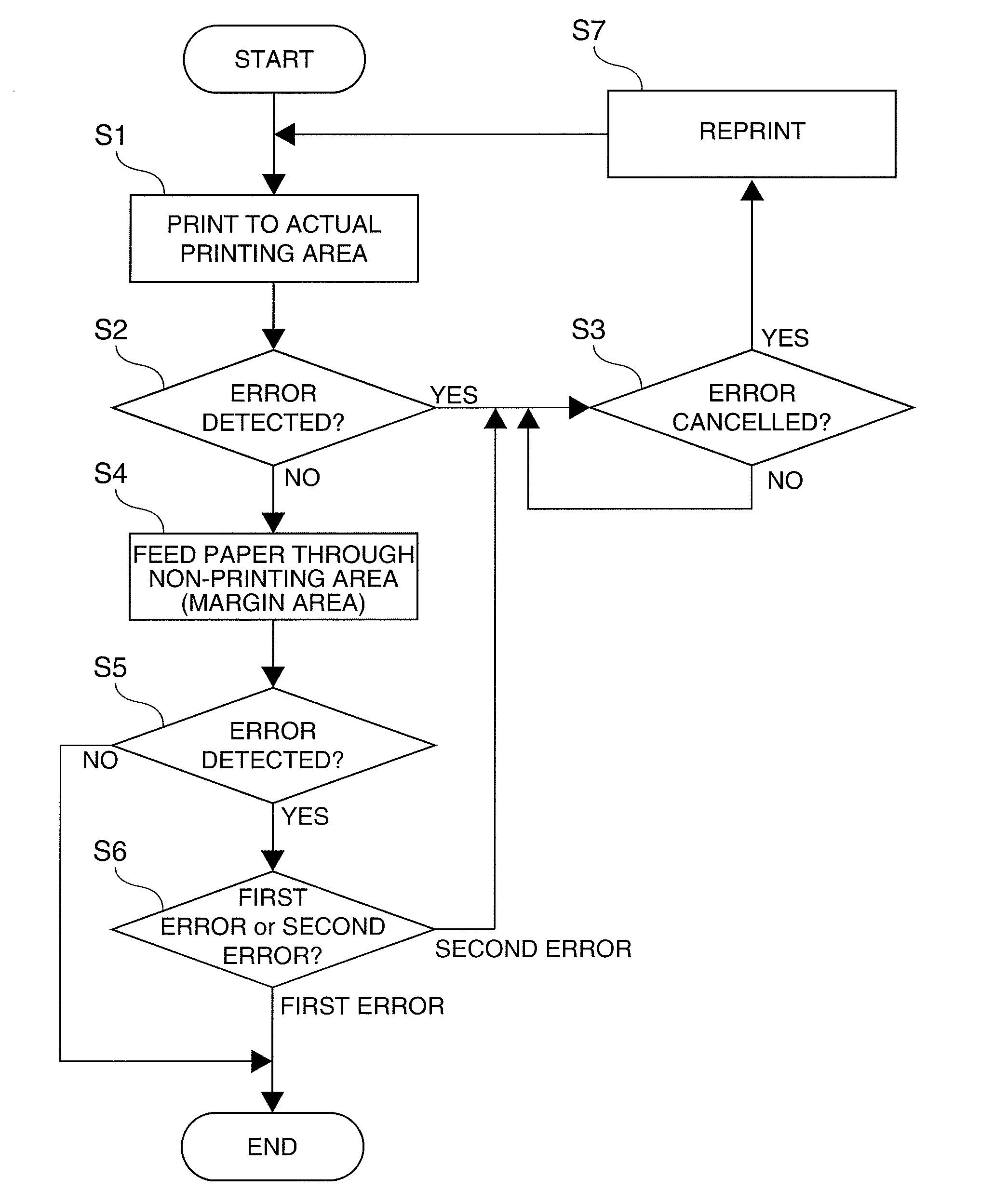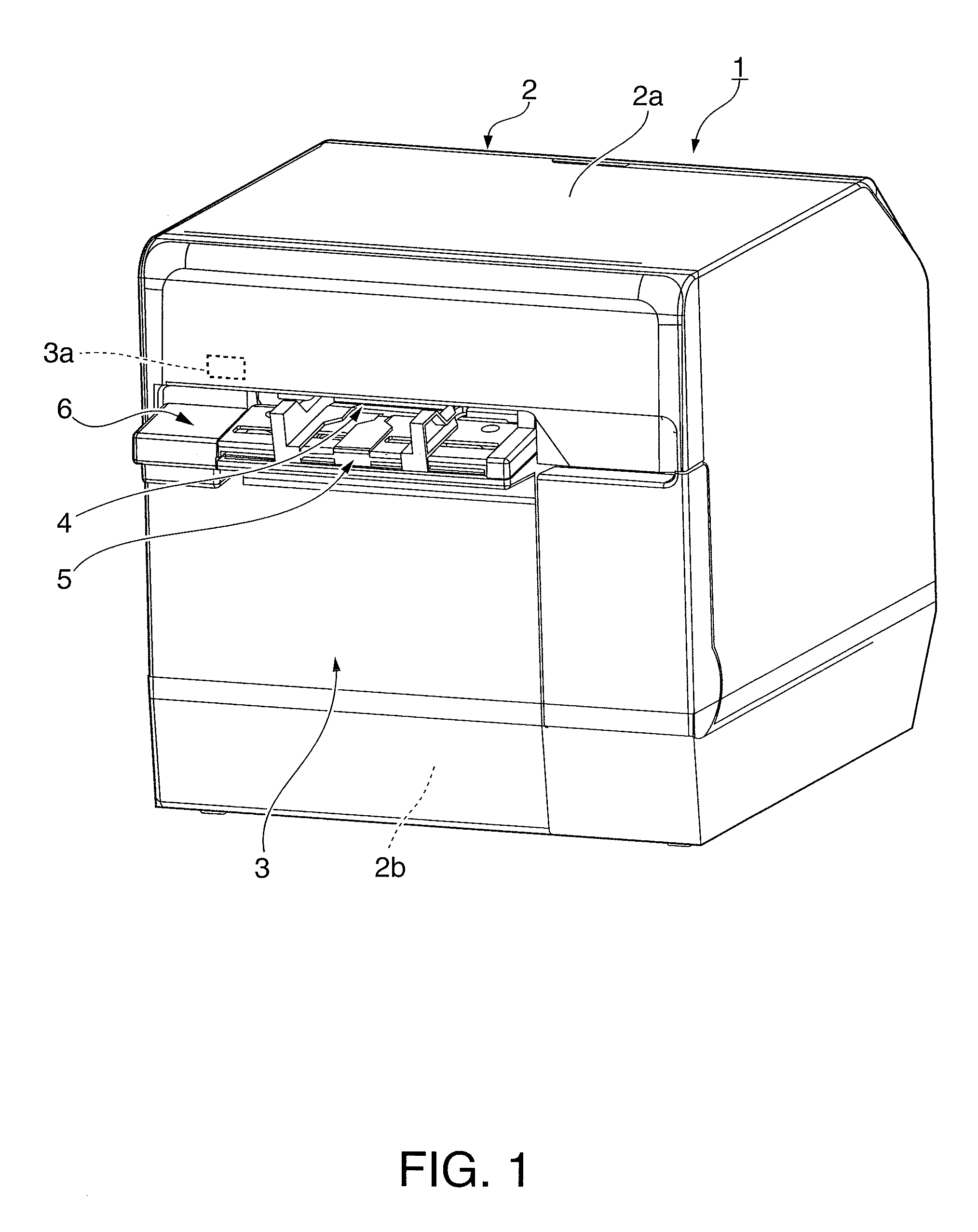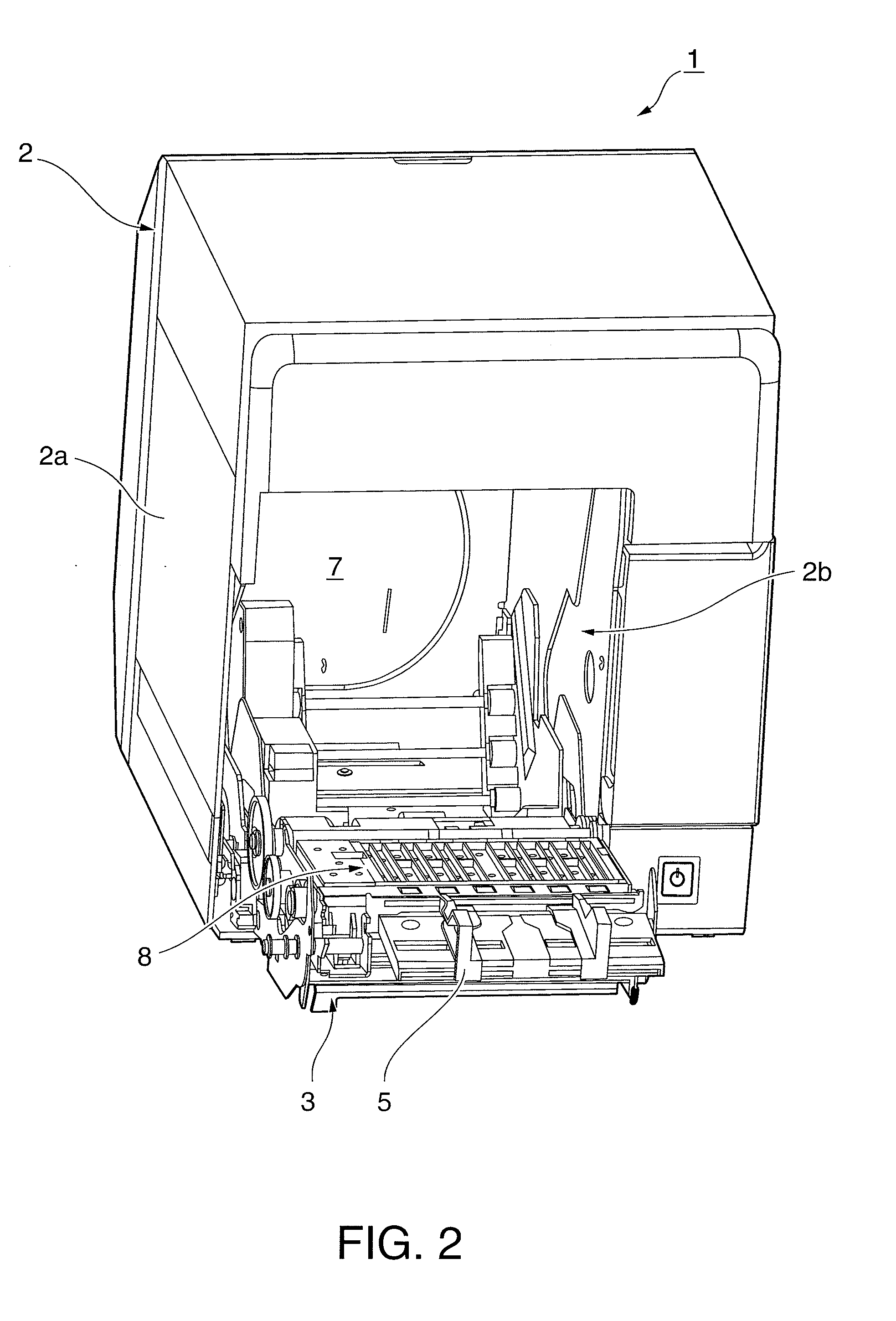Printer control method and a printer
a printing control and printer technology, applied in the direction of digital output to print units, instruments, visual presentations, etc., can solve the problems of unnecessary printing, and add a costly image sensor to the printer, so as to accurately determine reduce unnecessary reprinting and waste of consumables such as paper and ink. , the effect of reducing the need for reprinting
- Summary
- Abstract
- Description
- Claims
- Application Information
AI Technical Summary
Benefits of technology
Problems solved by technology
Method used
Image
Examples
Embodiment Construction
[0037]A printer according to a preferred embodiment of the present invention is described below with reference to the accompanying figures.
General Configuration
[0038]FIG. 1 is an oblique view showing an inkjet printer according to a first embodiment of the invention. FIG. 2 is an oblique view of the printer with the cover completely open.
[0039]The printer 1 has a rectangular box-like body 2 and a cover 3 that opens and closes and is disposed to the front of the body 2. A paper exit 4 of a specific width is formed at the front of the outside case 2a part of the printer body 2. An exit guide 5 projects to the front from the bottom of the paper exit 4, and a cover opening lever 6 is disposed beside the exit guide 5. A rectangular opening 2b for loading and removing roll paper is formed in the outside case 2a below the exit guide 5 and cover opening lever 6, and this opening 2b is closed by the cover 3.
[0040]Operating the cover opening lever 6 unlocks the cover 3. When the exit guide 5 ...
PUM
 Login to View More
Login to View More Abstract
Description
Claims
Application Information
 Login to View More
Login to View More - R&D
- Intellectual Property
- Life Sciences
- Materials
- Tech Scout
- Unparalleled Data Quality
- Higher Quality Content
- 60% Fewer Hallucinations
Browse by: Latest US Patents, China's latest patents, Technical Efficacy Thesaurus, Application Domain, Technology Topic, Popular Technical Reports.
© 2025 PatSnap. All rights reserved.Legal|Privacy policy|Modern Slavery Act Transparency Statement|Sitemap|About US| Contact US: help@patsnap.com



